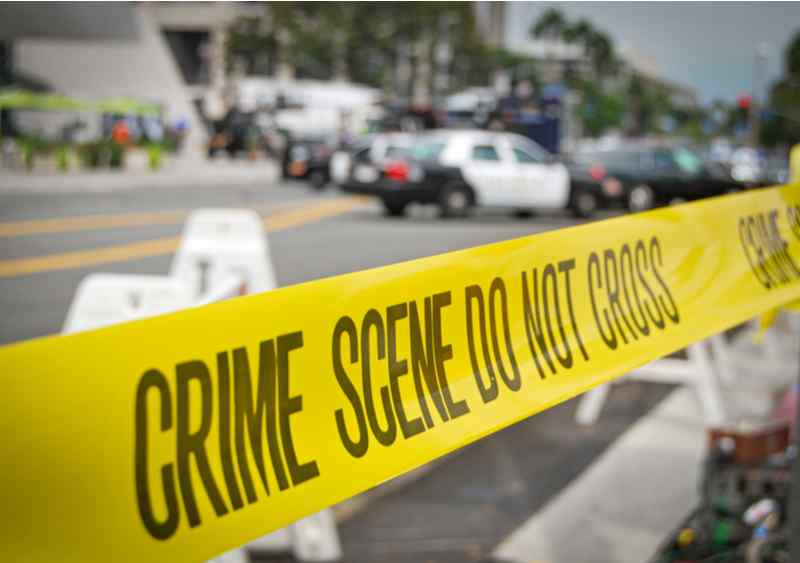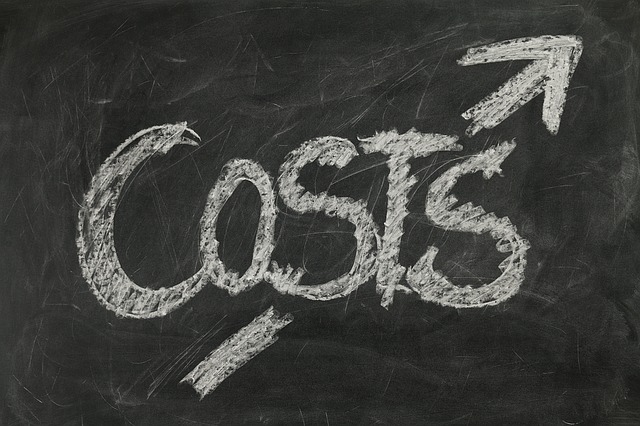The Link Between Crime and Poverty in the U.S. by State
What’s the link between poverty and crime? Emperor of the Roman Empire and Stoic philosopher Marcus Aurelius Antoninus (121-180 A.D.) said poverty is the mother of crime.
So many people worldwide are struggling to make ends meet. Poverty is blamed for being the primary driver of crime, with income inequality, and low social norms and values serving as additional reasons.
The World Bank has estimated 711 million people (about 10% of the global population) lived in extreme poverty in 2021. The U.S. Census Bureau reported an 11.4% poverty rate in the U.S. in 2020. That number was 10.5% in 2019. So let’s discuss the correlation between poverty and crime in the U.S.
Correlation Between Poverty and Crime
In the Oxford English Dictionary, crime is defined as “an action or omission, which constitutes an offense and is punishable by law.” Investopedia says poverty is a state or condition where a person or community doesn’t have the financial resources and essentials to meet a minimum standard of living.
Very often, poverty and crime coincide. However, this doesn’t mean that poverty is the only driver of crime. Popular theories and studies about crime also point to a breakdown in social norms and values as another cause. Some of these theories include the General Theory of Crime (Gottfredson & Hirschi) and Social Capital in the Creation of Human Capital (James Coleman).
The mentioned breakdown leads to unemployment, incomplete education, family structure breakdown, and a poor economic state. Crime is also associated with income inequality. But let’s focus on the relationship between poverty and crime.
The famous economic theory of crime by American economist Gary Stanley Becker demonstrates a direct link between poverty and crime. Based on the theory, people commit a crime only if the costs of committing it are lower than the benefits they’d gain. Thus, people living in poverty are more likely to take this step. In 1992, Becker received the Nobel Memorial Prize in Economic Sciences.
Another well-known sociology and criminology theory is the strain theory by American sociologist Robert K. Merton. Merton was a founding father of modern sociology. Based on this theory, the likelihood of committing a violent crime is higher among those individuals who feel economically or socially alienated from a majority group.
It’s also important to note that the terms “violence” and “crime” are often used interchangeably. However, they aren’t synonymous. Specifically, not all cases of violence are a crime, and not all cases of crime are violent.
For example, some criminal cases are violent, such as murder, while other types of crime aren’t associated with direct violence, such as tax evasion. In the same way, not every case of violence is criminal, such as many forms of psychological violence, e.g., verbal insult.
How Poverty Leads to Crime
The U.S. has witnessed the problem of crime since colonization (during the 17th and early 18th centuries). Crime rates saw a surge after 1900, with a peak between the 1970s and early 1990s.
The link between poverty and crime is direct. For example, let’s take the situation with COVID-19. Specifically, COVID-19 has had a devastating effect on the U.S. economy and resulted in soaring unemployment. Specifically, poverty in the U.S. grew in 2020 because of COVID .
As of March 2021, 74.7 million people had become unemployed since the start of COVID-19, as the U.S. Department of Labor reported. The majority of these jobs were in industries paying below-average wages.
The rise in unemployment is associated with increases in violence and homicide. Devastatingly, the U.S. witnessed about 25% more homicides in 2020 than in 2019, according to the Federal Bureau of Investigation’s (FBI) Crime Data Explorer website. Thus, economic hardships and uncertainty represent one set of explanations for the increase in crime.
Poverty and Crime Rates in the U.S.

There’s been an ongoing battle to solve the problem of poverty. Some of the solutions include reduced unemployment, higher wages, more robust unemployment insurance programs, larger investment in quality education, and elimination of inequities in the education system and higher education institutions.
Though the U.S. is relatively wealthy compared to many other countries around the globe, poverty is still a problem across the U.S.
When discussing how poverty leads to crime, it’s essential to look at poverty and crime statistics. In 2018, before COVID-19, the official national poverty rate was 11.8%, down 0.5 percentage points from 12.3% in 2017. This data is according to the U.S. Census Bureau. Here are more stats:
● The poverty rate in 2020 was 11.4%. The number was up one percentage point from 10.5% in 2019 and represented the first increase after five consecutive annual declines, as the U.S. Census Bureau reported.
● The soaring inflation played a role as well. As the U.S. Bureau of Labor Statistics reported , the rise in prices for food, gas, and other goods and services turned into the equivalent of a 2.4% pay reduction in 2021 for the typical private-sector employee.
● Based on the Bureau of Justice Statistics (BJS) data, the midyear rates in 2019 accounted for 734,500 inmates in local jails in the U.S .
● In 2019, 1,203,808 cases of violent crimes were registered in the U.S. , according to the FBI.
● According to Statista, as of June 2020, the U.S. registered the highest prison rate, with 655 prisoners per 100,000 of the national population.
● According to the Vera Institute of Justice, the prison population in state and federal prisons and local jails in the U.S. made up 1,814,800 in late 2020.
● For 2021, the FBI reported a murder rate of 6.9 per 100,000 people. The last time the country saw a crime surge like this was in 1996 and prior. Those years were recognized as a time of the thick violent crime when about 20,000 people were killed each year across the nation.
Examining the Poverty Threshold

The U.S. federal government measures poverty using the Poverty Threshold set by the U.S. Census Bureau and the poverty guidelines issued by the Department of Health and Human Services (HHS). The first one provides statistical data, and the second is used for administrative purposes. These guidelines are sometimes called the “federal poverty level” (FPL).
In the U.S., poverty status is assigned to those individuals who don’t meet a certain income threshold set by the HHS. Poverty is measured by comparing an individual’s or family’s income to determine a threshold or minimum amount of income necessary for covering basic needs.
The poverty thresholds are the original version of the federal measure. The U.S. Census Bureau updates them every year. In addition, each year, the HHS issues poverty guidelines that are the other version of the federal measure. The guidelines are the simplified version of the poverty thresholds, e.g., they can determine financial eligibility for specific federal programs.
According to WorldPopulationReview.com, as of 2022, the highest poverty rate (19.78%) was in Mississippi, and the lowest one was in New Hampshire (7.16%).
The highest homicide and firearm death rates were in Louisiana and Alaska: 12.4% and 23%, respectively. The lowest ones were in New Hampshire (1%) and Massachusetts (3.4%), respectively.
The table below demonstrates poverty and crime rates (homicide and firearm deaths)* in the U.S. by state:
| State | Poverty Rate | Homicide / Firearm Deaths (per 100,000 people) |
|---|---|---|
|
16.08% |
8.3 / 21.4 |
|
|
10.67% |
8.4 / 23 |
|
|
13.66% |
5.9 / 15.2 |
|
|
16.31% |
8.6 / 17.7 |
|
|
12.98% |
4.6 / 7.9 |
|
|
9.49% |
3.9 / 14.3 |
|
|
9.70% |
2.8 / 4.6 |
|
|
10.96% |
5.6 / 10.9 |
|
|
12.94% |
5 / 12.6 |
|
|
13.98% |
6.7 / 14.9 |
|
|
9.32% |
2.7 / 4.5 |
|
|
11.67% |
1.9 / 14.6 |
|
|
12.44% |
7.8 / 11.6 |
|
|
12.69% |
6 / 14.9 |
|
|
10.97% |
3.3 / 9.2 |
|
|
11.57% |
5.5 / 13.3 |
|
|
16.65% |
5.9 / 17.5 |
|
|
18.88% |
12.4 / 21.2 |
|
|
11.26% |
1.7 / 8.2 |
|
|
8.89% |
9 / 11.8 |
|
|
9.84% |
2.5 / 3.4 |
|
|
13.99% |
5.7 / 12.2 |
|
|
9.17% |
2 / 7.6 |
|
|
19.78% |
8.2 / 19.8 |
|
|
13.10% |
9.8 / 18.8 |
|
|
12.31% |
3.9 / 19 |
|
|
10.54% |
2.2 / 9.1 |
|
|
11.88% |
9.1 / 16.7 |
|
|
7.16% |
1 / 9.3 |
|
|
9.80% |
3.6 / 5.5 |
|
|
18.59% |
7.1 / 18.2 |
|
|
13.95% |
2.8 / 4.4 |
|
|
13.58% |
5.8 / 13.6 |
|
|
10.10% |
1.3 / 11.9 |
|
|
13.54% |
6.1 / 12.9 |
|
|
14.93% |
6.2 / 19.6 |
|
|
12.34% |
2.5 / 11.8 |
|
|
12.02% |
5.8 / 11.9 |
|
|
11.84% |
1.9 / 4 |
|
|
13.88% |
7.8 / 17.7 |
|
|
12.25% |
2.9 / 13.5 |
|
|
14.24% |
7.8 / 17 |
|
|
13.53% |
5 / 12.1 |
|
|
8.88% |
2.4 / 12.9 |
|
|
10.54% |
2.2 / 11 |
|
|
10.02% |
5.3 / 12 |
|
|
9.95% |
3.1 / 9 |
|
|
17.66% |
4.7 / 17.5 |
|
|
10.89% |
3.2 / 11.4 |
|
|
10.69% |
2.6 / 17.5 |
* Data taken from WorldPopulationReview.com
Sum Up
The direct link between poverty and crime has been shown through various studies and theories in the field. The connection of poverty to crime is also present in recent statistics as well.





